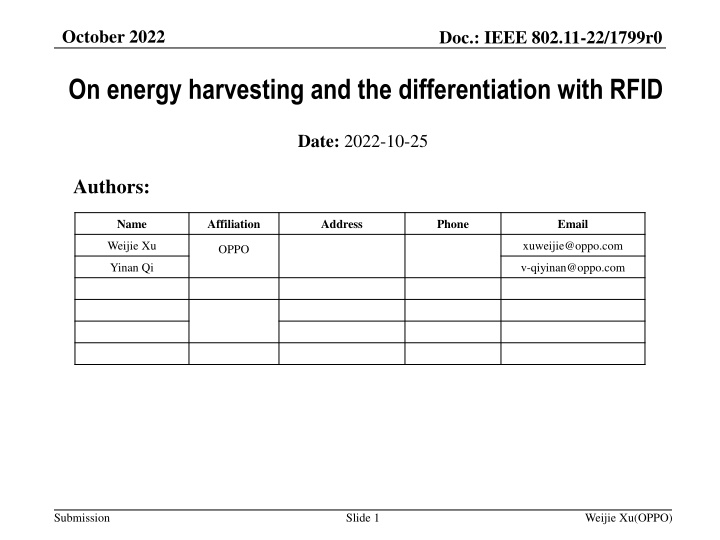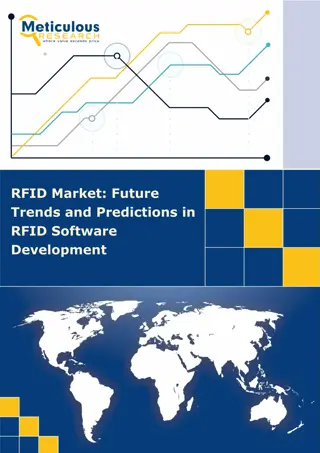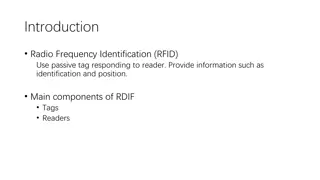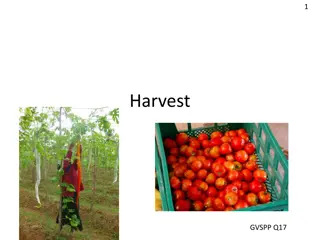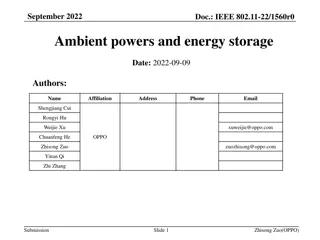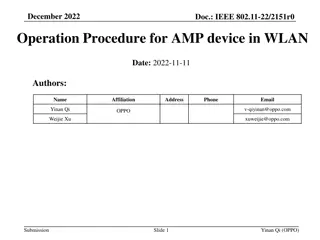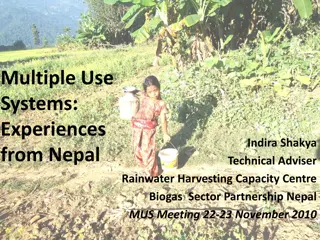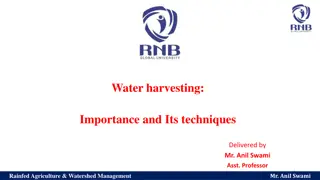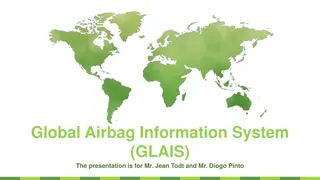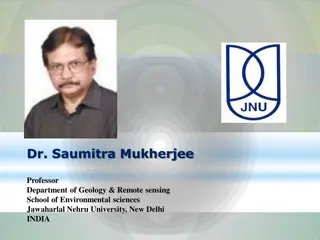Energy Harvesting and Differentiation in RFID
The document discusses the characteristics and constraints of RFID technology, exploring techniques for achieving battery-free operation, ultra-low power consumption, and methods to overcome RFID limitations. It also highlights the distinctions between RFID and AMP IoT, focusing on energy harvesting advancements and target use cases.
Download Presentation

Please find below an Image/Link to download the presentation.
The content on the website is provided AS IS for your information and personal use only. It may not be sold, licensed, or shared on other websites without obtaining consent from the author.If you encounter any issues during the download, it is possible that the publisher has removed the file from their server.
You are allowed to download the files provided on this website for personal or commercial use, subject to the condition that they are used lawfully. All files are the property of their respective owners.
The content on the website is provided AS IS for your information and personal use only. It may not be sold, licensed, or shared on other websites without obtaining consent from the author.
E N D
Presentation Transcript
October 2022 Doc.: IEEE 802.11-22/1799r0 On energy harvesting and the differentiation with RFID Date: 2022-10-25 Authors: Name Affiliation Address Phone Email Weijie Xu xuweijie@oppo.com OPPO Yinan Qi v-qiyinan@oppo.com Submission Slide 1 Weijie Xu(OPPO)
October 2022 Doc.: IEEE 802.11-22/1799r0 Characteristics of RFID RFID has already been widely used in many verticals. The essential function of RFID is identification. Key techniques include RF energy harvesting and backscattering. - active RFID can also use a battery Ultra-low complexity and Ultra-low cost. - Currently, the cost can be as low as ~0.03 $. - Very simple RF and baseband circuits with limited memory (~x KB). Limited performance, efficiency and reliability. - Communication distance less than 10 meters - limited number of RFID devices can be processed per second Submission Slide 2 Weijie Xu(OPPO)
October 2022 Doc.: IEEE 802.11-22/1799r0 Constraints of RFID Only support single-tag connection at one time and NOT able to communicate to with multiple RFID tags simultaneously. No power management, i.e., only operating instantly with harvested power Reader talks first since the RFID tag requires RF power and carriers. Performs CSMA by reader. Very low system efficiency - Although multiple RFID channels in a band, FDM is Not supported due to ultra-low complexity of RFID tags (e.g., no channel level filtering) Strong interference between DL/UL due to full-duplex operation. - Communication distance can be significantly improved with separate transmitter and receiver of the reader Submission Slide 3 Weijie Xu(OPPO)
October 2022 Doc.: IEEE 802.11-22/1799r0 What can be leaned from RFID? Techniques to achieve battery-free. - RF energy harvesting etc. Techniques to achieve ultra-low complexity and ultra-low power consumption. - Backscattering - Ultra-low power circuit - Low order modulation Techniques to go beyond the constraints of RFID - Balance between the cost and the performance shall be the objective Submission Slide 4 Weijie Xu(OPPO)
October 2022 Doc.: IEEE 802.11-22/1799r0 Aspects differentiating AMP IoT from RFID The target use cases for AMP IoT and RFID are different. - Reusable AMP devices in use cases including logistics, supply chain, smart manufacturing, smart home, positioning, agriculture, etc. Higher complexity and higher power consumption (but less than 1mw) than that of RFID is allowable. Higher performance than RFID is expected for AMP IoT - Support longer communication distances, up to 200 meters for outdoor scenario - Support higher system capacity, e.g., enabling multiple channel multiplexing - Support higher reliability It can enable the communication between AMP IoT devices and smart phone (non-AP STA). Submission Slide 5 Weijie Xu(OPPO)
October 2022 Doc.: IEEE 802.11-22/1799r0 Energy harvesting A variety of ambient power sources, e.g., RF radio waves, temperature difference, vibration, light etc. can be used for AMP IoT. - Only one type of power source may be utilized for one AMP IoT device in one use case How to perform energy harvesting can be up to implementation. If RF power is used, the AP needs to send RF power signals to the AMP devices. A dedicated power link may be needed to provide this RF power signals. - It can be further discussed how to provide this power link, whether it needs to be specified or up to implementation. Submission Slide 6 Weijie Xu(OPPO)
October 2022 Doc.: IEEE 802.11-22/1799r0 Summary In this submission, the following are present: - The merits and constraints of RFID. - What can be learned from RFID - Aspects differentiating AMP IoT from RFID - Energy harvesting Submission Slide 7 Weijie Xu(OPPO)
